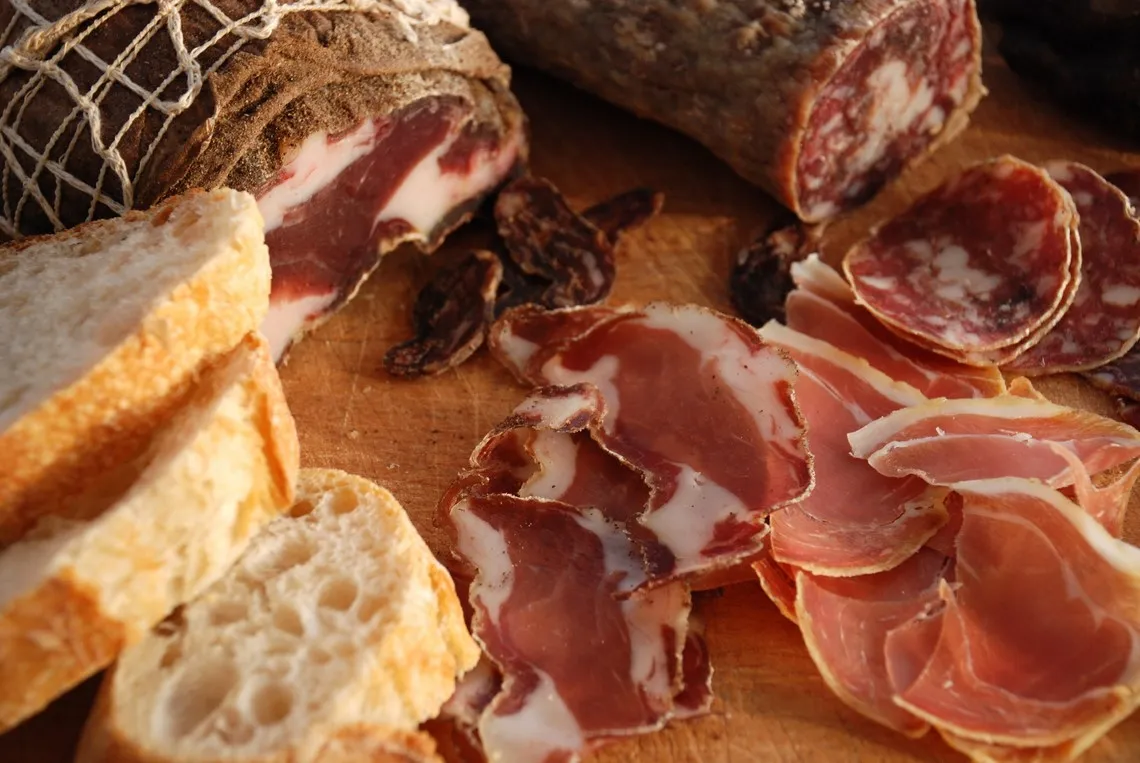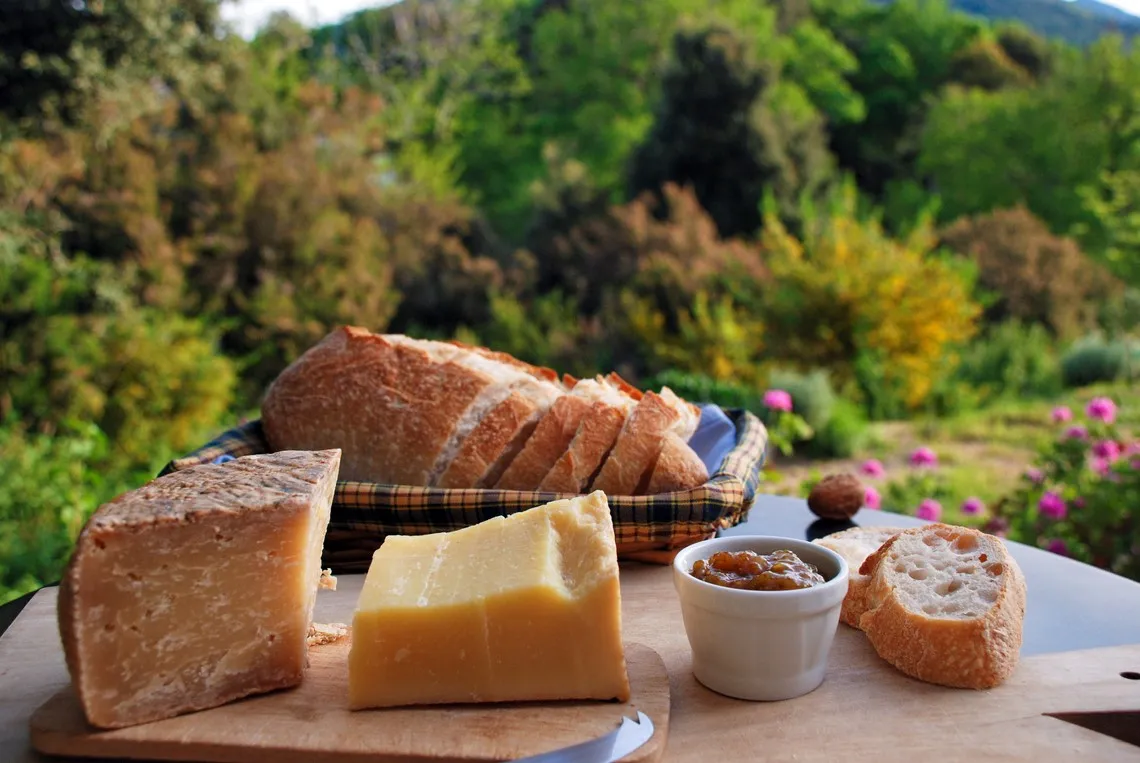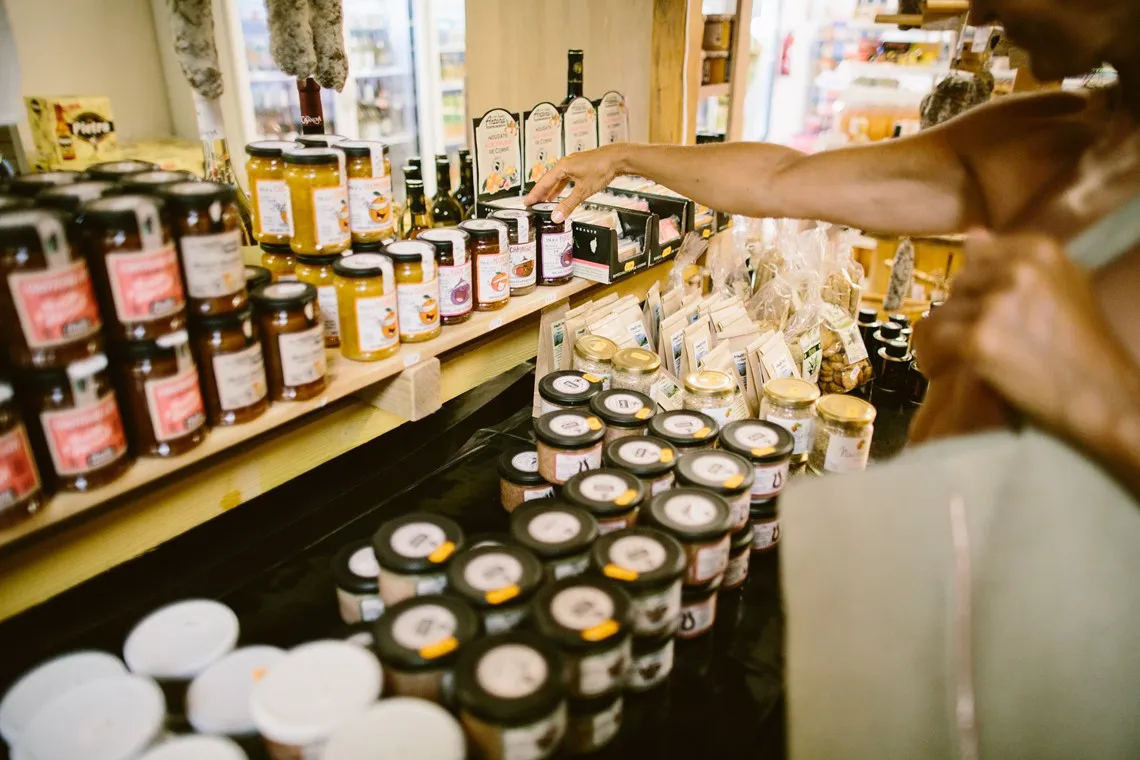Corsican gastronomy
Scrumptious and savoury familal cuisine
Traditional Corsican cuisine has evolved from the products of mountain agriculture: meat, charcuterie and cheeses from livestock farming (pigs, goats, sheep, calves), chestnuts, honey, vegetables from the garden, fruit from the orchard, and wild herbs harvested on the paths (mint, "nepita", marjoram, thyme...). The hunting season brings tasty game (wild boar, blackbirds, partridge...). The coastal communities cook seafood (rock fish, sea urchins, lobsters, etc.) and cultivate vines and olives on the hillsides.
A simple, generous and fragrant cuisine, punctuated by the seasons and religious celebrations, which are the occasion for festive meals: lamb and goat at Christmas, bread of the dead, cacavellu...
A few Corsican specialities
Corsican pork charcuterie
The Corsican pig (porcu nustrale) lives in the wild in near freedom. It feeds on acorns, chestnuts and maquis grass, which give its meat a characteristic taste. Raw prisuttu ham, cured coppa loin and salted, dried and matured lonzu fillet have obtained the Appellation d'Origine Contrôlée (AOC) which guaranteeing their origin and quality.
Corsican cheese
Each region has its own cheese, each producer his or her own recipe and maturing times to create a wide variety of goat or sheep cheeses. Brocciu, a Corsican fresh cheese made from whey, is eaten at the end of a meal plain, sweetened or with brandy. Fresh or dry, it is used in the preparation of many sweet or savoury recipes (ambrucciata, fiadone, fritelle, falculelle, omelettes, cannelloni...).
The Corsican chestnut
A basic ingredient in traditional cooking, chestnuts are eaten whole (roasted or boiled, in soups and stews) and in flour for the preparation of many dishes (fritters, pastries, pulenta...). Corsican chestnut flour has the Appellation d'Origine Contrôlée (AOC).
Corsica´s eastern coast (l´Oriente), stronghold of regional and tasty products.
Eastern Corsica, where Riva Bella Thalasso & Spa resort is located, is the breadbasket of the island. A vast and fertile sheltered plain where many Mediterranean species thrive in a mild climate.
Together, eastern vineyards cover 4 500 hectares, two thirds of Corsica's wine-growing area. They produce in particular the Vin de Corse, a vintage wine with a controlled designation of origin. The region is also known for its olive cultivation, producing a fine and tasty oil. It also the origin of the Clementine de Corse, a citrus fruit protected by a PGI, with a wild and acidic taste. From here, too, comes the Noisette de Cervionne hazelnut, whose gustatory qualities and naturally salty taste have delighted the palate since antiquity.
Several small producers operate fields and orchards in the vicinity of the Riva Bella naturist campsite. Throughout the year, these organic producers and market gardeners offer fresh and quality produce. Among these are various fruits and vegetables, but also herbs, herbs of the maquis, saffron and other spices and many others. Local products are also further processed. Liqueurs, brandies and Corsican whisky are produced, with jams, mustards, Corsican biscuits and other farm products that enhance Corsican gastronomy.
The eastern coast of Corsica is criss-crossed by meandering rivers that join the sea in salty lagoons. These constitute natural habitats for a myriad of seafood, in particular oysters and mussels from the Diana lagoon, whose delicate and fragrant flesh has seduced inhabitants and visitors since antiquity.
The region is throned by mountainous foothills that give rise to chestnut flour in Castagniccia, sparkling water in Orezza, D.O.C. amber honey and livestock farming which produces traditional Corsican cold meats and cheese.
While exploring this territory, one can only be astounded by the beauty of the constantly changing landscapes. You will also be seduced by the richness of the local products used in different Corsican tasty specialties creating a mosaic of flavours for a colourful gastronomy.










